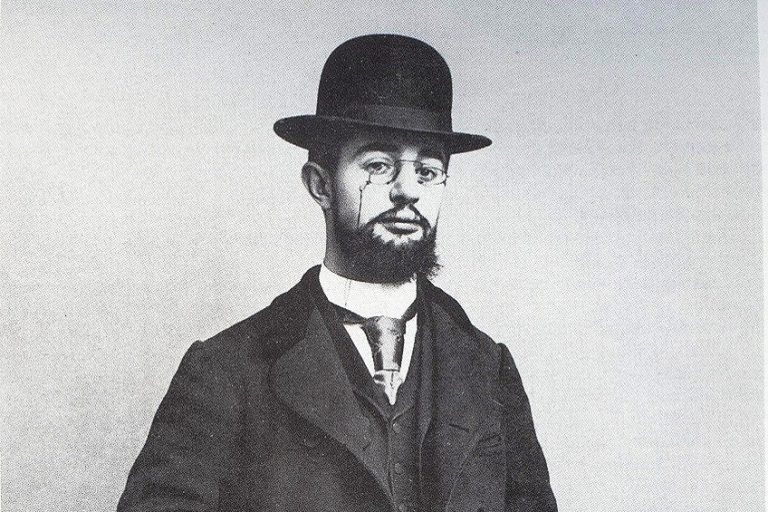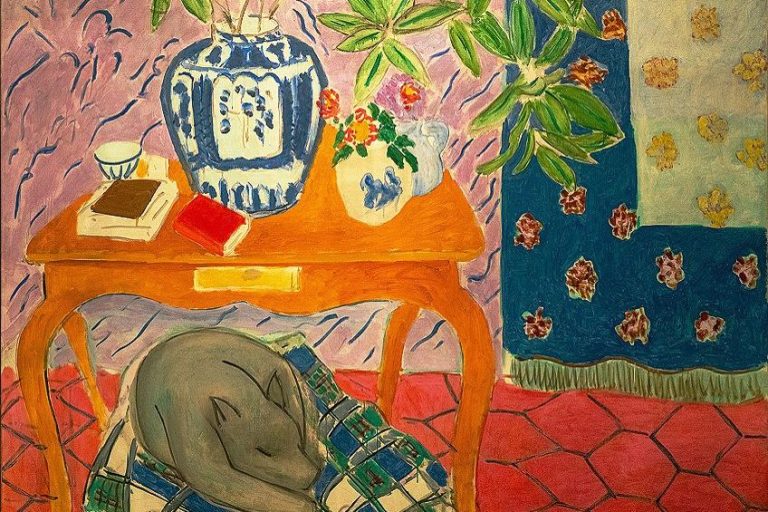Rembrandt van Rijn – Visiting the Influential Rembrandt Time Period
Rembrandt Harmenszoon van Rijn is a premier Dutch Master, sitting beside others like Jan Vermeer. Throughout his artistic career, Rembrandt experimented with many subject matters. From the portraits of his earlier years to biblical scenes, Rembrandt excelled. In this article, we take a closer look at the life and works of this great Dutch artist.
Table of Contents
- 1 Rembrandt’s Biography: Who Is Rembrandt?
- 2 The Late Style of Rembrandt
Rembrandt’s Biography: Who Is Rembrandt?
You may have heard his name, but who is Rembrandt exactly? Rembrandt van Rijn had a life full of variety and tragedy. After a bright youth of exponential success, Rembrandt’s life took a downward turn. Despite his overwhelming success, financial hardship marked much of his life. Perhaps to struggle is the curse of all great artists, and Rembrandt certainly was a great artist. There are roughly five Rembrandt time periods, and each differs distinctly in its style and subjects.
| Nationality | Dutch |
| Date of Birth | 15 July 1606 |
| Date of Death | 4 October 1669 |
| Place of Birth | Leiden, Dutch Republic |
The Early Life of Rembrandt: Where Was Rembrandt Born?
In contrast to many other artists of his time, Rembrandt did not come from an artistic family. So, where was Rembrandt born? In 1606 Leiden, Rembrandt was born to his miller father and baker mother in the Dutch Republic. Rembrandt’s parents had ten children in total, but only six of them survived. Both of Rembrandt’s parents were religious, with his father belonging to the Dutch Reform Church and his mother, Roman Catholic. Although much of Rembrandt’s work has deep religious iconography, there is no evidence regarding his own religious beliefs.
As was customary at the time, Rembrandt attended an elementary school and then went on to study at the Leiden Latin School. The Latin School focused primarily on classics and biblical studies, and his time at this school likely laid the way for his future paintings and etchings. Many art historians believe that his unique ability to stage figures in his paintings stemmed from the emphasis the Latin School placed on oratory skills. We do not know if Rembrandt finished his time at the Latin School, but many believe he left school early to pursue training in painting.

Artistic Training
Between 1620 and 1625, Rembrandt was training as an artist. As was the custom at the time, Rembrandt trained under two masters. The first master that Rembrandt trained under was Jacob van Swanenburgh. Jacob can Swanenburg was also from Leiden, and he taught Rembrandt the fundamental knowledge and skills of painting for around three years.
Rembrandt’s first master specialized in scenes of the underworld and hell, as well as architectural pieces. The need to paint fire and its reflections likely lie beneath his enduring fascination with light.
Following his time with van Swaneburgh, Rembrandt spent six months studying under a second master. Pieter Lastman was a history painter, and it was with him that Rembrandt was able to master that particular painting genre. The history painting genre centered around historical, biblical, allegorical, and mythological figures in complex settings.
History painting held the top position in the painting hierarchy of the time. The reason behind this position was that it required the command of almost every subject, including landscapes, still-life scenes, costumes, animals, architecture, the human figure, costumes, drapery, and a range of expressions.
There are also arguments that Rembrandt may have had some stylistic training with Jan Lievens. Lievens was something of a child prodigy, and although he was a year younger than Rembrandt, he was already a fully flourished artist by the time Rembrandt was training. Scholars know that after Rembrandt returned to Leiden around 1625, he and Lievens worked together closely for several years.
The Leiden Period: 1625 – 1631
This is the first of the five Rembrandt time periods. Following his return to Leiden in 1625, Rembrandt settled as an independent master. It was during the following six years that Rembrandt set the stage for the works that would follow. We can clearly see the influence of Lastman’s style in these early Rembrandt paintings.
Many of these early paintings appear to be remakes of some of Lastman’s compositions. This method of taking apart the composition of your master and reassembling the elements was typical of the time, and many of Rembrandt’s students would do the same.
Most Rembrandt paintings from his Leiden period were smaller historical paintings.
Rembrandt also painted several tronies, which are paintings of costumes from the Middle Eastern and other Asian countries. These costumes represent bravery and piety. These tronies were not portraits, but there must have been people who posed for them.
During his Leiden period, many believe that Rembrandt may have shared his studio with Lievens. Together, the young artists experimented with paint consistency. The pair used variations in the paint surface to execute different surfaces. In fact, there have been some suggestions that the two may have been competing because they both produced paintings of the same subject on several occasions.
Paintings from the Leiden Period: Lighting Developments
Between 1627 and 1629, Rembrandt underwent a rapid transformation in style. The paintings he produced shortly after returning to Leiden have a quality to them that resembles waxworks. The figures are arranged clearly within an organized space like actors, illuminated by even lighting. You can see the development of his techniques in The Artist in His Studio (1628) and Judas Repentant (1628/9).

It was the lighting that evolved in his works over this period. Rembrandt began to exaggerate the diminuendo as the composition moved away from the light source. He also concentrated the force of the light at the center, making the light appear to be a spotlight.
Rembrandt realized that in order to make the source of light more realistic in his paintings, he needed to leave significant areas of the canvas bathed in shadow.
In his Two Old Men Disputing (1628), Rembrandt displays a new lighting method, clustering all the illuminated items in the painting in a single area. As a result, Rembrandt did not need a great deal of shadow to separate these forms. Clusters of coherent darker tones in the background and foreground surround this area of light.

Not only could Rembrandt create an almost furnace-like intense center of light, but he also created a strong sense of unity within the composition. It is possible for a viewer to quickly grasp the whole painting with a single glance, thanks to this unity.
To create this effect, Rembrandt did have to make some sacrifices. Firstly, to maintain tonal unity, he needed to sacrifice a great deal of detail. Another thing that Rembrandt needed to sacrifice was the use of bright, saturated colors. Strong colors would diminish the effect that Rembrandt desired.
Etchings in the Leiden Period
Rembrandt made his first etchings during his first Leiden period, around 1628. The decision to begin experimenting with etching was a significant moment in Rembrandt’s career. While drawing is a natural counterpart to painting, etching is not. As it turned out, beginning to create etchings propelled him towards international fame. Throughout his career, Rembrandt widely disseminated the prints from his roughly 300 etchings.
By analyzing his early etchings from the Leiden period, historians have determined that Rembrandt was likely self-taught. In contrast to many of his contemporaries who used the regular and highly stylized hatching techniques, Rembrandt used a much more loose and free etching technique, which seems, on the first impression, to be a little nervous.
This new technique worked in Rembrandt’s favor, however. With his line-making, Rembrandt was able to create etchings that seemed more sketch-like and painterly.
Once again, we can see Rembrandt’s mastery of light in his painterly etchings. He manages to achieve an incredibly suggestive play of shadow and light, using different hatching methods to create a convincingly atmospheric space. Throughout his career, Rembrandt transitioned through many stages in his etching practice. New technological developments have allowed historians to investigate his work in more detail, and they have determined that he likely printed his own etchings.

The First Amsterdam Period: 1631 – 1635/36
Unlike many artists of his time who traveled extensively throughout Europe, Rembrandt never left the Dutch Republic. He did move around within his country, and following just under a decade in Leiden, Rembrandt moved to Amsterdam. While Leiden was in decline, Amsterdam was a thriving and growing center for art.
1631 saw Rembrandt entering into a business relationship with an Amsterdam painting entrepreneur, Hendrick Uylenburgh. Uylenburgh had an extensive workshop that, among other things, carried out restorations, painted portraits, and produced copies.
When moving to a new town, it was essential for an artist to become a master of the guild. This status, and it alone, would allow the artist to sell their works in that town. For Rembrandt, however, this process was not as simple as it should have been.
Before an artist could become master of the guild in a town, he had to serve in the workshop of a local master for a period of one or two years. This process is likely the reason why Rembrandt moved to Uylenburgh’s workshop. While working in Uylenburgh’s workshop for a period of four years, Rembrandt married Saskia van Uylenburgh, Uylenburgh’s niece.
Rembrandt Portraits in the First Amsterdam Period
While working in Uylenburgh’s workshop between 1631 and 1635, Rembrandt produced a significant number of portraits. These portraits were often pairs of pendants and sometimes group portraits, like The Anatomy Lesson of Dr. Nicolaes Tulp, which Rembrandt painted in 1632.

Very quickly, Rembrandt took over the portrait market, relying on his experience with history painting. Rembrandt’s success was due to his ability to breathe much more life into his portraits than the portrait painters who dominated the Amsterdam scene.
Rembrandt portraits have dynamic yet simple contours and a limited amount of detail.
As a result, he led the viewer’s gaze directly to the face and the vitality of the figure, avoiding any distraction. Rembrandt’s experimentation with different paint consistencies in Leiden also placed him in good stead for rendering human skin in exceptional detail.
Rembrandt continues to play with light throughout his portraiture. Almost always, Rembrandt positions the sitter so that their face is at an angle. This angle creates a line of demarcation along the nose between areas of illumination and shadow. The positioning of Rembrandt’s faces produces a dramatic division between the flood of light illuminating the front of the face and the shadowy recesses in the background.
Another significant characteristic of Rembrandt’s portraiture is the fluid positioning of his sitters. His portrait paintings are distinct from the stiff formality of many other portrait artists before him. Instead, Rembrandt’s depictions communicate his own deep compassion for all humanity, regardless of age, wealth, or status.
While he was skilled at capturing the viewer’s eye, his ability to capture the likeness of his sitters was not superior. We need only compare his authentic self-portraits to see the considerable physiognomic differences between them. In comparison to other artists, Rembrandt produced the least accurate portraits.
The portrait of Johannes Wtenbogaert, the famously banned Remonstrant preacher, is the best example of this discrepancy. Comparing Rembrandt’s painting to those by Jacob Adriaenszoon and Michiel Janszoon van Mierevelt, it is clear which one lacks in the likeness department.
According to stylistic analyses, it appears that Rembrandt may have had occasional help from others with his portraiture. This help was not because he lacked ability, but it was the custom in portrait workshops. For example, in Rembrandt’s Portrait of Johannes Wtenbogaert (1633), the hands are stylistically different and were clearly painted by a studio assistant.
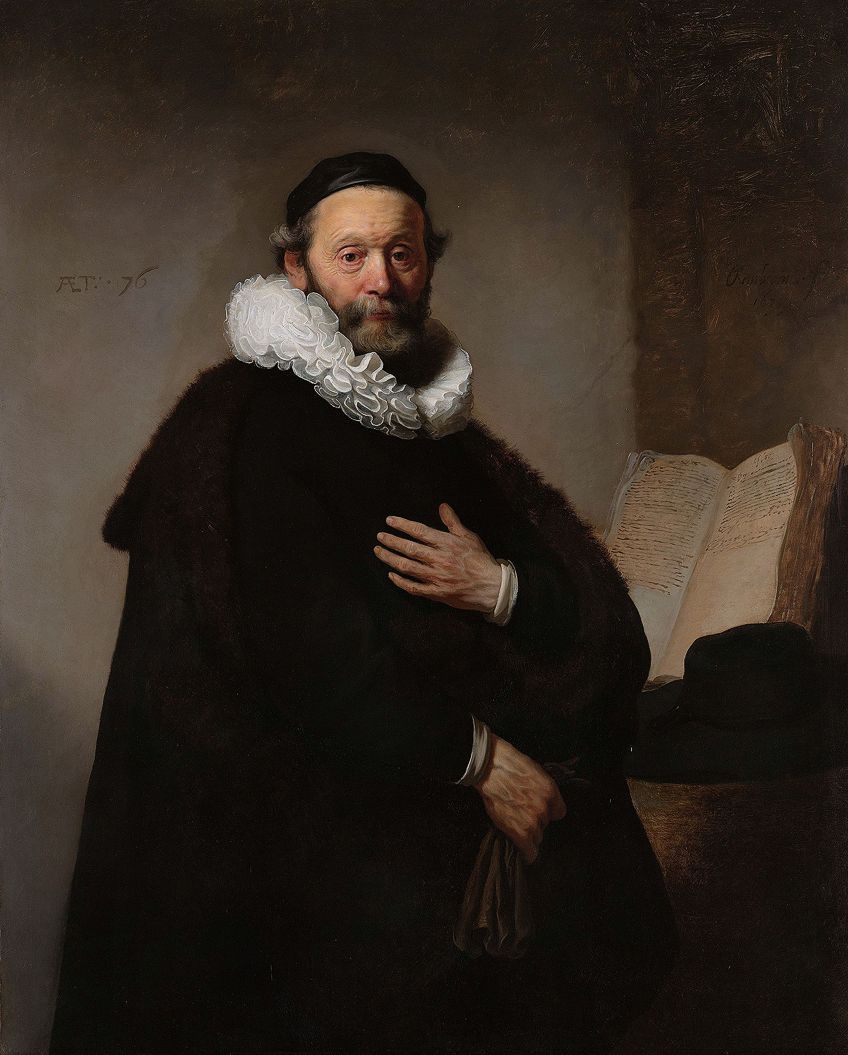
Religion in the First Amsterdam Period
There is no consensus among historians about the extent of Rembrandt’s own religious beliefs, but religion was a prominent theme in his works throughout his career. During his first Amsterdam period, Rembrandt created many history paintings, and they were often biblical scenes.
Many of these biblical paintings were in the form of grisailles or grayscale works. Historians believe that Rembrandt painted these works as precursors to an ambitious series of prints. These prints were intended to constitute a Passion series, which unfortunately remains unfinished.
It was not uncommon for Rembrandt to paint himself and friends and family into his biblical scenes. Some suggest that, despite his lack of clear religious affiliation, Rembrandt saw the bible as a personal diary. In 1661, he painted St. Paul as himself. Perhaps this self-portrait was a comment on his own personal beliefs. St. Paul had warned against the tendencies among early Christians to separate themselves into sects.

The Second Amsterdam Period: 1635 – 1642
Rembrandt’s second Amsterdam period began after he left Uylenburgh’s workshop in 1635. Rembrandt began to establish himself as an artist in his own right, eventually buying a house. However, Rembrandt did not pay for it in full, and as a result, he experienced significant financial problems in later years.
The years surrounding 1640 were certainly the highest point in Rembrandt’s career. In these years, Rembrandt’s fame grew exponentially, so much so that he was called “one of the most esteemed painters” of the century. In Europe during this time, there was a growing population of art lovers. The purpose of the art lover was to come to understand paintings so that they could hold discussions with other lovers and even artists themselves.
The art lovers found inspiration in the extraordinary relationships between artists and patrons of old, like Alexander the Great and Apelles, his court painter.
Throughout the late 1630s, Rembrandt became increasingly preoccupied with Leonardo da Vinci. In particular, it was his painting Last Supper (1498) that Rembrandt knew from a reproduction print and found fascinating. Rembrandt produced several sketched variants of this composition, and from these sketches, we can see that Rembrandt was interested in the problem of symmetry in the grouping of the figures.

Rembrandt attempted to surpass da Vinci in his composition of The Wedding of Samson (1638). Rembrandt managed to create a much livelier composition than da Vinci. The Wedding of Samson was one of many group portraits produced by Rembrandt at the turn of the 1640s.
From 1640 until 1642, Rembrandt appears to have been primarily occupied with creating a large group portrait of the Amsterdam civic militia company. This painting is now one of Rembrandt’s most famous works, The Night Watch (1642). The painting depicts 34 figures, including 18 men from the militia and 16 random figures to flesh out the scene.
The Night Watch (1642)
Throughout his career, Rembrandt produced countless famous pieces, and The Night Watch is one of the most well-known. Today, all sides of the painting are trimmed. As a result, the captain and his lieutenant are pushed to the center of the frame. This alteration to the composition undermines Rembrandt’s intention for this piece – to create a work of unity. We can see the original composition, which is far more coherent and dynamic, in a copy by Gerrit Lundens.
The current trimmed state of this painting also illuminates the most crucial problem with this work. The problem is simultaneously the most interesting feature, which is the use of lighting. There are two figures with intense illumination, and they dominate the composition. The first is the lieutenant. The second figure is the girl in the middle ground. Both of these figures are wearing yellow. This choice of clothing strengthens the effect of the light and causes a double spotlight effect.

As a result of this effect, the painting seems to have very subdued tonal values. This darkness certainly contributed to the naming of the painting. Van Hoogstraten, a former student of Rembrandt, complained about the lack of light in this painting, despite praising the unity of the composition. It is believed that these comments may have contributed to the myth of the rejection of Night Watch and the fall of Rembrandt.
You can find Night Watch and many other Rembrandt and Vincent van Gogh paintings at the Rijksmuseum and Van Gogh museum. The museums are located very close to one another in Amsterdam where Rembrandt died, despite the location being far away from where van Gogh died in Auvers-sur-Oise.
The Third Amsterdam Period: 1643 – 1658
His production changed dramatically in the following decade. He did not produce a single painted portrait, possibly because he did not receive any commissions or perhaps rejected those he received. Rembrandt also slowed down production extensively. His production of paintings drastically diminished, and the few he did create varied significantly in style, size, and subject. This sparseness of painting production remains a mystery, but rumors surrounding Night Watch have contributed to a developing “Rembrandt myth.”
According to this myth, Rembrandt became increasingly misunderstood and ignored following Night Watch in 1642. As a result of this lack of attention, Rembrandt became increasingly financially strained, eventually passing away poverty-stricken. Many proponents of this myth believe that his art became deeper during this period.
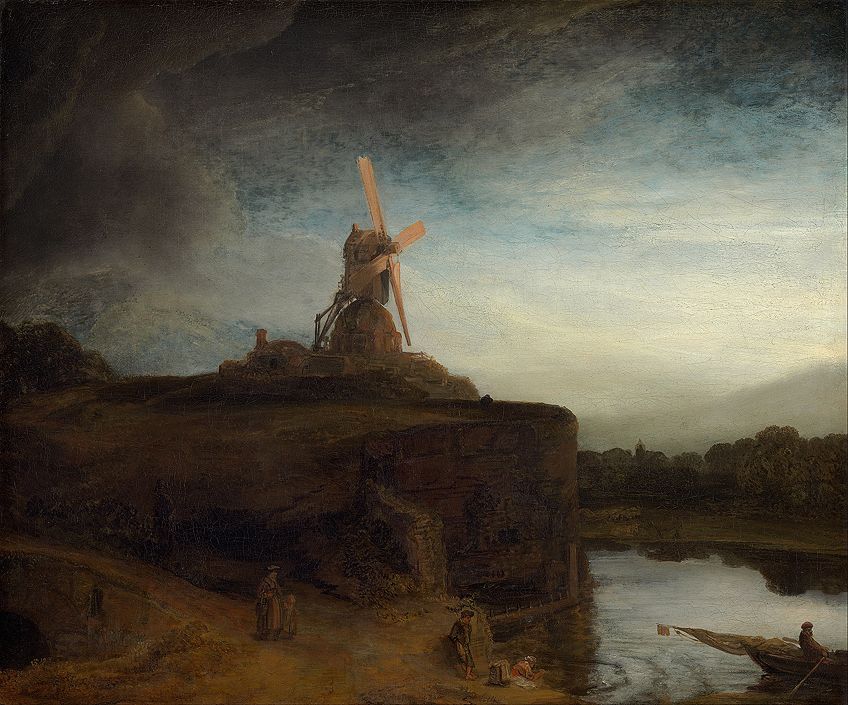
Rembrandt became increasingly honest and true to himself; the classically misunderstood genius. This myth owes a lot of its formulation to the Saul-Paul model of biographical writing. According to this model, a conversion or crisis creates a sudden shift in the direction of the subject’s life.
According to the myth, the rejection of Night Watch and the death of his wife were the events that sparked Rembrandt’s fall. This myth is rejected by many art historians because there is an astounding lack of support for it. There is insufficient evidence to suggest a serious rejection of Night Watch – Rembrandt was paid for the painting, and it remained on exhibition.
What we can tell from the sparse paintings and variation in the style of his third Amsterdam period is that Rembrandt appeared to be searching for something. It was during this time that he began to develop his late style.
The Late Style of Rembrandt
There are three key elements to the late style of Rembrandt. His use of light goes through another transformation, and he begins to use broader brushwork. Despite this broader brushstroke, the third essential part of his late style is the increased painterly style of his work.
Rembrandt’s increased use of broader brushstrokes is probably the most obvious aspect of his late style. Although the differentiation in his brushstrokes is extraordinary, individual brushstrokes often remain visible. On whatever scale Rembrandt applied the brushwork, it seemed that chance was in control more than ever before. These later works seemed almost to have been created in an accidental way, with unrestrained freedom that Rembrandt had never demonstrated before.
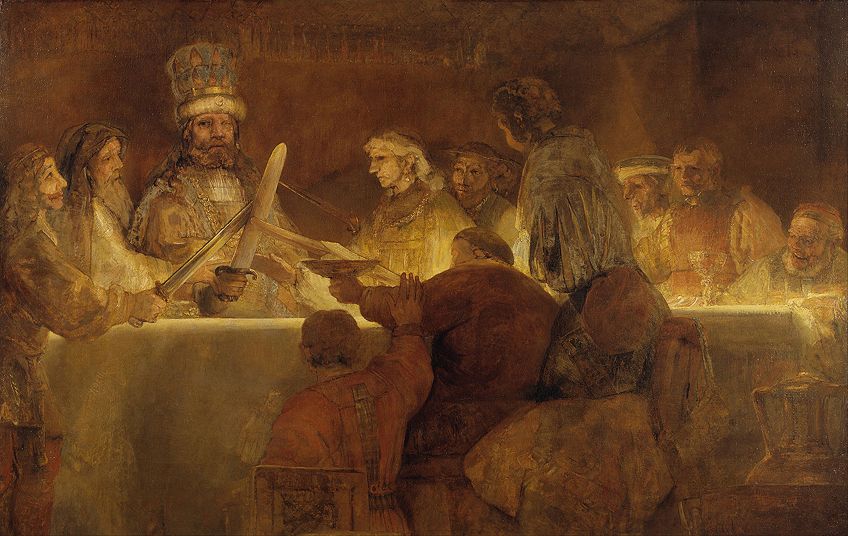
Despite this brushstroke freedom, Rembrandt’s late work does not appear to be sketchy or less immaculate than before. In contrast, his painterly execution and intensity of observation only increase. While the brushwork seems full of life and movement, the figures in his paintings seem to hold more stillness than before. Gone was the natural liveliness that was characteristic of his earlier work. This stillness is not the same as rigidity, but instead, his figures seem to be in a state of potential dynamism.
The effects of light had always been a key consideration for Rembrandt, and it underwent another transition in his late period. In his early works, Rembrandt focused on creating a light intensity hierarchy in his works, but this logic appears to take on a magical quality in his later pieces.

In his later works, the strong spotlight effect is replaced with a light that appears to radiate from the figure and linger around them. You can see the way that light seems to radiate in an illogical way around Homer’s bust in Aristotle (1653). You can see the same effect in Conspiracy of the Batavians (1661) and Jakob’s Blessing (1656).
Rembrandt is certainly one of the most celebrated European painters, and his work remains some of the most valuable. Although little is known about his personal life, there is extensive information to inform Rembrandt’s biography. His paintings are distinguishable by his incredible command of light, his unique ability to render textures in exacting detail, and the compassion and life that he breathed into his figures.
Isabella studied at the University of Cape Town in South Africa and graduated with a Bachelor of Arts majoring in English Literature & Language and Psychology. Throughout her undergraduate years, she took Art History as an additional subject and absolutely loved it. Building on from her art history knowledge that began in high school, art has always been a particular area of fascination for her. From learning about artworks previously unknown to her, or sharpening her existing understanding of specific works, the ability to continue learning within this interesting sphere excites her greatly.
Her focal points of interest in art history encompass profiling specific artists and art movements, as it is these areas where she is able to really dig deep into the rich narrative of the art world. Additionally, she particularly enjoys exploring the different artistic styles of the 20th century, as well as the important impact that female artists have had on the development of art history.
Learn more about Isabella Meyer and the Art in Context Team.
Cite this Article
Isabella, Meyer, “Rembrandt van Rijn – Visiting the Influential Rembrandt Time Period.” Art in Context. April 22, 2021. URL: https://artincontext.org/rembrandt-van-rijn/
Meyer, I. (2021, 22 April). Rembrandt van Rijn – Visiting the Influential Rembrandt Time Period. Art in Context. https://artincontext.org/rembrandt-van-rijn/
Meyer, Isabella. “Rembrandt van Rijn – Visiting the Influential Rembrandt Time Period.” Art in Context, April 22, 2021. https://artincontext.org/rembrandt-van-rijn/.




